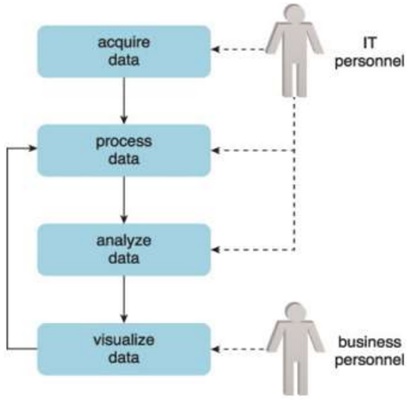Home »
Big Data Analytics
Big Data Adoption and Planning Considerations
In this tutorial, we will learn about big data adoption and planning considerations: important factors to consider.
By IncludeHelp Last updated : June 09, 2023
Before using a new technology by a company, it needs to figure out how to keep it safe in a way that meets the company's current security standards. Tracking where the information came from, and how it was used, is often a new requirement for organizations. Privacy of constituents whose data is being used for analytical processes must plan properly to protect the privacy of people whose data is being treated or whose identities are exposed by analytic processes.
The adoption of big data is a transformative process. Transformation activities are innovative and business-driven. These activities are planned and designed in a way that the risk is low and the efficiency and effectiveness are high. Adoption and planning are changing the way a business works in terms of goods, services, or organization.
When it comes to adopting big data and planning for its implementation, there are several key considerations that organizations should keep in mind. Here are some important factors to consider:
1. Organization prerequisites
Organizations often have certain prerequisites or requirements that need to be fulfilled like security ethics, financial requirements, Background checks, Compliance with regulations, and evaluation process.
2. Define objectives
Clearly define the goals and objectives and determine the specific problems we want to solve, the insights we want to gain, or the improvements we want to make in your business processes.
3. Data procurement
The acquisition of big data solutions can be economical; the procurement of big data solutions can be cost-effective.
4. Data strategy
Develop a comprehensive data framework for business objectives. Determine the types of data we need to collect, the sources of data, the data quality requirements, and the management of data storage, processing, and security.
5. Privacy
Analyzing datasets can disclose private information about organizations and individuals. Using authentication and authorization mechanisms, big data must be secured by ensuring that data networks and repositories are adequately protected.
6. Infrastructure and technology
We should evaluate existing infrastructure and technology capabilities to determine if they can support big data initiatives like necessary hardware, software, and network infrastructure, or if we need to invest in new technologies.
7. Provenance
Provenance information can be used for tracking and to figure out if the data is real and of good quality.
8. Data integration
Consider how you will integrate big data with existing data sources and systems. Determine the data integration methods and tools you will use to bring together data from different sources and formats. Ensure compatibility and interoperability between various data platforms and systems.
9. Data governance and security
Establish robust data governance policies and procedures to ensure data quality, integrity, and privacy. Define who has access to the data, and how data will be stored and protected.
10. Skills and expertise
Big data initiatives often require data scientists, data engineers, analysts, and other specialized roles. Determine whether we have the necessary talent in-house or if you need to hire or train personnel to fill those roles.
11. Finance
Evaluate the potential return on investment for your big data initiatives. Consider the costs associated with data acquisition, infrastructure, technology, and talent, as well as the potential benefits such as improved decision-making, operational efficiency, and customer insights.
12. Change management
Prepare for the organizational changes that big data adoption may require. Ensure that employees understand the benefits of big data and are trained to work with new technologies and processes.
13. Continuous improvement
Establish mechanisms to monitor and measure the success of your big data projects. Collect feedback, analyze results, and iterate on your strategies to continuously optimize the value derived from big data.
14. Distinct performance challenges
Performance is often a problem for Big Data systems because they have to deal with large amounts of data. For example, long query times can be caused by big datasets and complicated search methods.
15. Distinct methodology
Controlling the data migration into and out of big data solutions will necessitate a methodology.

It will need to contemplate how feedback loops can be established to facilitate the processed data.
16. Clouds
Cloud computing solutions offer remote environments that can host IT infrastructure for large-scale storage and processing.
Advertisement
Advertisement